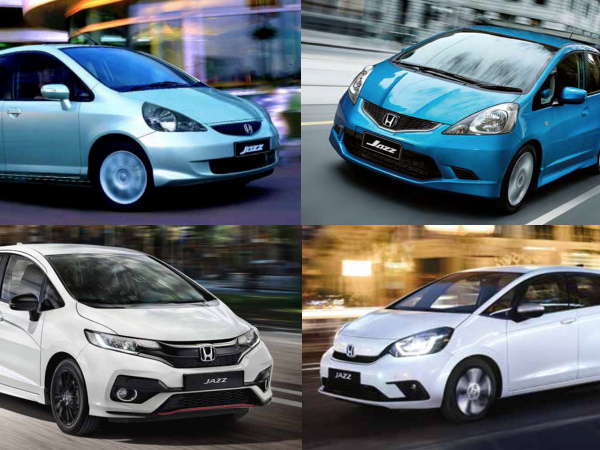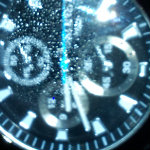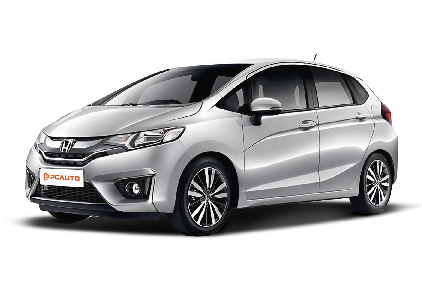Q
How much does it cost to replace a headlight on a Honda?
In Malaysia, the cost of replacing headlights for Honda cars varies depending on the model and type of headlights chosen. Generally, the replacement cost for standard headlights on common Honda models is approximately between 500 and 1000 Ringgit. For high-end models or headlights with special technology, the cost may be higher, reaching 1500 Ringgit or even more. However, the exact price still needs to be consulted and confirmed at the local car repair shop according to the actual situation.
Special Disclaimer: This content is published by users and does not represent the views or position of PCauto.
Related Q&A
Q
What Segment is Honda Jazz?
The Honda Jazz is classified as a B-Segment small hatchback in the Malaysian market. This segment is typically characterized by flexible handling, economic practicality, and convenience for urban commuting, making it suitable for Malaysia's narrow streets and high fuel costs. The Jazz has become a popular choice in this segment, especially among young families and urban commuters, thanks to its iconic "Magic Seat" flexible seating design, efficient Earth Dreams engine technology, and spacious interior within a compact body.
In the Malaysian market, competing models in the same segment include the Toyota Yaris and Perodua Myvi. However, the Jazz is well - known for the high resale value and reliability of the Honda brand. It's worth noting that B - Segment vehicles in the Southeast Asian market generally prioritize fuel economy and maintenance costs. The combination of the Jazz's 1.5L i - VTEC engine and CVT transmission can achieve an actual fuel consumption of over 15 km/L, meeting the local consumers' demand for practicality.
In addition, this vehicle line was upgraded to a hybrid version in some global markets in 2021. However, the current models in Malaysia still mainly use traditional fuel power. Whether a new energy version will be introduced in the future depends on Honda's regional strategic adjustments.
Q
What is the Reslae Value of Honda Jazz?
The resale value of the Honda Jazz in the Malaysian used - car market is relatively stable. This is due to its reliable quality, low fuel consumption, and the high local recognition of the Honda brand. Depending on the vehicle's age, mileage, and condition, a 3 - to 5 - year - old Jazz can usually retain 50% - 65% of its original price. The Hybrid models may have a 5% - 8% premium because of their energy - saving features.
The key factors affecting its residual value include regular maintenance records (especially the maintenance of the CVT transmission), the body color (white and silver are more popular), and whether it is still within the original factory warranty period. It is recommended that car owners keep complete maintenance receipts and use original factory parts to maximize the vehicle's value retention.
Among its peers, the used - car price performance of the Jazz is better than some of its competitors. This is related to its flexible space design (such as the ULTRA seat system) and low failure rate. However, the specific transaction price still needs to refer to the real - time data on used - car platforms like Carlist or mytukar.
It's worth noting that the tax - exemption policy for domestic cars introduced in some regions after 2020 has slightly affected the price fluctuations of imported used cars. But as a cost - effective urban vehicle, the demand for the Jazz remains strong in urban areas like the Klang Valley.
Q
How Many CC is Honda Jazz?
The Honda Jazz models available in the Malaysian market are mainly equipped with a 1.5 - liter naturally aspirated engine with a displacement of 1497cc (cubic centimeters). This is a common 'golden displacement' for compact hatchbacks, balancing fuel economy and power performance. This engine uses Honda's i - VTEC technology, capable of outputting approximately 120 horsepower and 145 Nm of torque. It is paired with a CVT transmission or a 6 - speed manual transmission (depending on the version), which is suitable for urban commuting and flexible driving.
It's worth noting that while the displacement (CC) affects power output, the actual driving experience also depends on engine tuning, vehicle weight, and the matching of the transmission system. For example, Honda has optimized the combustion efficiency of the Jazz through Earth Dreams technology, making the torque more abundant at low speeds. Malaysian customers can also pay attention to the minor changes in different model years when making a choice. For instance, some versions after 2020 have upgraded the Honda SENSING safety system.
Similar models in the same class, such as the Toyota Yaris or Perodua Myvi, also use a similar displacement, but they have different technological focuses. It is recommended to take test drives for comparison. Additionally, Malaysia's automotive tax structure gives vehicles with a displacement below 1.5 liters a price advantage, which is also one of the reasons why the Jazz has been popular for a long time.
Q
What is the Engine in Honda Jazz?
The Honda Jazz available in the Malaysian market is equipped with a 1.5-liter i-VTEC naturally aspirated gasoline engine. This engine is well - known for its high efficiency and reliability. It has a maximum output power of approximately 120 horsepower and a peak torque of 145 Nm, making it suitable for city driving and daily commuting while also taking fuel economy into account.
This engine adopts Honda's classic i-VTEC technology, which optimizes power output and fuel consumption through an intelligent variable valve timing and lift system. Paired with a CVT continuously variable transmission, it offers a smooth driving experience.
In addition, the Honda Jazz also comes in a hybrid version (such as the e:HEV). It combines a 1.5-liter Atkinson cycle engine with a dual - motor system, further enhancing energy - saving efficiency, which is ideal for consumers with higher environmental protection requirements.
For Malaysian users, the durability and low maintenance cost of this engine are also among the reasons for its popularity. Moreover, Honda's after - sales service network covers the whole country, providing convenience for car owners. When it comes to the used - car market, the engine of the Jazz also has a relatively high resale value, making it an economical and practical choice.
Q
What is the Gearbox Type of Honda Jazz?
The transmission types vary among different versions of the Honda Jazz. Specifically, the 2019 Honda Jazz 1.5 S, 1.5 E, and 1.5 V versions all come with a CVT (Continuously Variable Transmission). This type of transmission offers a smooth shifting experience, making the driving process even more seamless and also helping to improve fuel efficiency.
On the other hand, the 2019 Honda Jazz 1.5 Hybrid version is equipped with a DCT (Dual-Clutch Transmission). A dual-clutch transmission allows for rapid gear changes and highly efficient power transfer, which can enhance the vehicle's dynamic performance and driving pleasure to some extent.
Each type of transmission has its own unique features. Consumers can choose the appropriate model according to their driving habits and needs.
Q
What is the PCD Size of Honda Jazz?
The PCD (Pitch Circle Diameter) size of the Honda Jazz is 4x100, which means its wheels have 4 bolt holes, and the centers of these holes are distributed on a circle with a diameter of 100 millimeters. This specification is very common in the Malaysian market and is suitable for many economy and compact cars. Understanding the PCD size is crucial when replacing wheels or upgrading tires because if the PCD doesn't match, the wheels won't be installed correctly, which may affect driving safety.
Apart from the PCD, when choosing wheels, you also need to pay attention to the center bore diameter (CB) and the offset value (ET) to ensure full compatibility. Owners of the Honda Jazz can choose factory - spec wheels or wheels from other brands that meet the 4x100 PCD when modifying their wheels. However, it is recommended to choose certified products to ensure quality and safety.
In addition, when modifying wheels, you need to pay attention to the traffic regulations in Malaysia to ensure that the modified vehicle meets local standards and avoid penalties for violations.
Q
Does Honda Jazz Support Apple Carplay?
Yes, some models of the Honda Jazz in Malaysia are indeed equipped with Apple CarPlay, especially the higher - spec versions like the Honda Jazz RS or Honda Jazz Hybrid. These models usually come with a touch - screen infotainment system that's compatible with Apple CarPlay. This allows users to connect their iPhones via a data cable and use functions such as navigation, music, and making calls. It's important to note that there might be differences in Jazz models of different years and configurations. It's recommended to confirm the specific features with the dealer before purchasing. The addition of Apple CarPlay significantly enhances driving convenience, enabling users to use common phone functions more safely without having to take their eyes off the road to operate their phones.
Moreover, the Honda Jazz is well - loved by Malaysian users for its flexible interior space design and fuel efficiency. It's ideal for city commuting and small families. If you have high requirements for in - car connectivity features, you can also look into similar configurations of other models in the same class, such as the Toyota Yaris or Mazda 2, to make a more suitable choice.
Q
What is the Tyre Brand of Honda Jazz?
The original-equipment tire brands for the Honda Jazz in the Malaysian market may vary depending on the model year and configuration. Common tire - supplying brands include mainstream manufacturers such as Dunlop, Yokohama, or Bridgestone. These brands are well-known for their wear resistance and wet - surface performance, which meet the requirements of the rainy climate in Southeast Asia. Car owners can confirm the specific tire model through the sidewall markings or the user manual. For example, the Dunlop ENASAVE EC300+ is a common choice for high-efficiency and energy-saving tires in recent years.
It's worth noting that since tires are consumable items, when replacing them, in addition to the original-factory specifications, you can also consider silent and comfortable products like the Michelin Primacy 4 or the Continental UC6. However, you must ensure that the size (such as 185/55 R16), load index, and speed rating meet the matching requirements of the Jazz's suspension setup and ABS system.
Regularly checking the tire pressure (it is recommended to do it once a month) and wheel alignment can extend the tire life. Especially on the high-temperature roads in Malaysia, the rubber ages more quickly. If the tread depth is found to be less than 1.6 millimeters, you should replace the tires immediately to comply with JPJ regulations.
Q
Is Honda Jazz a Good Car? Learn the Pros and Cons Here!
The Honda Jazz is a highly favored small hatchback in Malaysia. Its advantages include a flexible body size that is suitable for city driving, and it offers economical fuel consumption. The 1.5-liter i-VTEC engine it is equipped with provides smooth and reliable power. The interior space is cleverly designed. In particular, the "Magic Seats" allow for flexible adjustment of the storage space, making it suitable for families or young consumers. Moreover, the Honda brand has an extensive after-sales service network in Malaysia, making maintenance relatively convenient.
However, it does have some drawbacks. Its sound insulation is average, and wind noise is quite obvious when driving at high speeds. The rear suspension is tuned to be on the stiffer side, which affects comfort to some extent. Also, its configuration may not be as rich as that of its competitors in the same class.
For buyers with a limited budget who value practicality and brand reliability, the Jazz is a worthy option to consider. But if you're looking for higher comfort or more advanced technological features, you may need to compare other models.
In Malaysia's hot and rainy climate, it is recommended to regularly check the air-conditioning system and the anti-rust condition of the chassis to extend the vehicle's lifespan.
Q
What is the Width of Honda Jazz?
The body width of the Honda Jazz is 1,694 millimeters. This dimension is considered moderate among the common city compact cars in Malaysia. It can ensure that the interior lateral space is sufficient for three adults to sit comfortably, and at the same time, it can also flexibly maneuver through the narrow streets of Kuala Lumpur or the old shopping mall parking lots. As a global strategic model of Honda, the compact body design of the Jazz is particularly suitable for the winding mountain roads and congested urban roads in Malaysia. The MM concept (minimizing the mechanical space and maximizing the interior space) it adopts enables the 1,694-millimeter body width to achieve a class - leading interior space utilization rate. The magic seats in the rear can be folded in multiple combinations, which is very practical when carrying large items such as potted plants or durians.
It's worth noting that when purchasing a compact car in Malaysia, besides paying attention to the body width, you should also take note of the overall width data when the rear - view mirrors are unfolded. This is especially important for the local road conditions where motorcycles often shuttle through. The electric folding rear - view mirror function of the Jazz can handle this situation very well.
Latest Q&A
Q
What is a 2020 VW Passat worth?
In 2020, the second - hand car prices of the Volkswagen Passat in Malaysia were approximately between RM90,000 and RM130,000. The specific value depends on factors such as the vehicle's condition, mileage, configuration version, and maintenance records. For example, the price difference between the entry - level version equipped with a 1.8 TSI engine and the high - end 2.0 TSI version can be up to RM30,000. Usually, for each additional year of the vehicle's age or every 10,000 kilometers exceeded in mileage, the price will decrease by 5% to 8%.
It's worth noting that as a German mid - size sedan, the Passat has a better resale value in the second - hand market than some Japanese competitors. This is due to its solid chassis tuning and the reliability of the EA888 engine. At the same time, it is recommended that buyers give priority to vehicles with complete original - factory maintenance records and pay attention to checking the shifting smoothness of the 7 - speed DSG transmission. Such details will significantly affect the long - term use cost. In Malaysia's hot climate, special attention should also be paid to the aging of rubber parts. Regularly replacing the coolant and transmission oil can effectively extend the vehicle's service life.
Q
Is a 2020 VW Passat a good car?
The 2020 Volkswagen Passat is a model worth considering in the Malaysian market. It has won the favor of many consumers for its comfort, practicality, and reliable performance. This car is equipped with a 1.8-liter or 2.0-liter turbocharged engine, which provides smooth power output and good fuel economy, making it suitable for both city driving and long-distance travel in Malaysia.
The interior design is simple yet elegant. The materials used are of high quality, and the space is quite roomy. In particular, there's plenty of legroom in the back row, which makes it perfect for family use. In terms of technology features, it comes with an 8-inch touchscreen, Apple CarPlay, and Android Auto, enhancing the convenience of daily use.
Safety is also one of the Passat's strong points. It comes standard with a number of active safety technologies, such as automatic emergency braking and blind-spot monitoring. In Malaysia, Volkswagen has a relatively well - established after - sales service network, so maintenance is relatively convenient.
It should be noted that as a German - made car, the prices of its spare parts may be slightly higher than those of Japanese cars. However, its overall quality and durability are excellent. For Malaysian consumers who value comfort and practicality, the 2020 Passat is a great choice. It is recommended to compare it with Japanese or Korean models in the same class before making a purchase and make a decision based on your own budget and needs.
Q
How big is the trunk of the Passat 2020?
The 2020 Volkswagen Passat has a trunk capacity of 586 liters. This space is more than ample for daily use or family outings. It can easily hold multiple suitcases or large items, which suits the Malaysian consumers' preference for long - distance travel and their relatively high demand for shopping. If you need to expand the space, the rear seats can be folded down in proportion, further enhancing the storage flexibility and making it convenient to carry longer items like golf clubs or camping gear.
In Malaysia's hot and rainy climate, the Passat's trunk design also takes practicality into account. The interior is flat and the opening is large, facilitating the loading and unloading of items. Among cars in the same class, the Passat's trunk performance is above average, balancing comfort and practicality. It's a great option for users who value space and versatility.
Moreover, the Passat's trunk is equipped with useful anchor points and storage features, which make it easy to secure items or store small things in an organized way. These little details can bring a lot of convenience in daily use.
Q
What gas does a 2020 Passat take?
The 2020 Volkswagen Passat is recommended to use RON 95 unleaded gasoline in the Malaysian market. This is the most common and cost - effective fuel choice in Malaysia, which can fully meet the daily needs of the 1.8 TSI or 2.0 TSI turbocharged engines of this model, and it also complies with local fuel standards and vehicle design specifications. If you're after better performance, you can also opt for RON 97 unleaded gasoline. Its higher octane rating can optimize the engine's anti - knock performance under high - load conditions. However, it should be noted that Malaysia uses a floating oil price mechanism, and the cost of RON 97 is significantly higher than that of RON 95.
It's worth mentioning that all gasoline in Malaysia is required to have detergents that meet EURO 4M standards or higher, which can effectively keep the fuel system clean. Car owners don't need to buy additional fuel additives. For turbocharged models, it's advisable to regularly check the status of the high - pressure fuel pump and injectors at authorized service stations, as these direct - injection engines are quite sensitive to fuel quality.
In addition, there may be differences in fuel supply between the Malaysian Peninsula and some remote areas in East Malaysia. Before a long - distance self - drive trip, you can check the distribution of gas stations through the MyEG or Petronas apps.
Q
What kind of oil does a 2020 Passat use?
For the 2020 Volkswagen Passat in the Malaysian region, it is recommended to use synthetic engine oil that meets the VW 502 00 or VW 504 00 standards. The viscosity is usually 5W - 30 or 5W - 40. The specific choice needs to be adjusted according to the driving environment and climate conditions. In hot climates, 5W - 40 can be given priority to provide more stable high - temperature protection.
Malaysia has a hot and humid climate. It is recommended that car owners change the engine oil regularly every 10,000 kilometers or 12 months (whichever comes first), and ensure that the vehicle is serviced at an authorized dealership or a certified repair center to maintain the validity of the warranty.
It should be noted that if the vehicle is equipped with a GPF (Gasoline Particulate Filter), low - ash engine oil (such as those meeting the VW 504 00 standard) must be used to avoid clogging. The quality of the engine oil directly affects the engine's lifespan and fuel efficiency. It is recommended to choose well - known brands like Castrol, Shell, or Liqui Moly, and select products that are VW - certified. Also, regularly check the engine oil level, especially before long - distance trips.
If you often encounter congested traffic or engage in high - intensity driving, you can appropriately shorten the oil change interval to 8,000 kilometers to optimize protection.
View MoreRelated News

Auto Arena: Which generation of Honda Jazz (Fit) is your favorite?
LienMay 21, 2024

Honda N-ONE e: Officially launched in the Japanese market, with a range of 295 kilometers
AshleySep 12, 2025

Honda Prelude returns after 24 years, the sixth-generation Prelude will be released in Japan
Kevin WongSep 4, 2025

Honda S7 and P7 sales in China fall short of expectations, significantly lagging behind Toyota and Nissan.
RobertSep 4, 2025

The 2025 Honda Prelude Is Back: Hybrid-Powered Coupe with Type R Chassis Tech
JohnAug 4, 2025
View More










 Cars
Cars


Pros
Cons